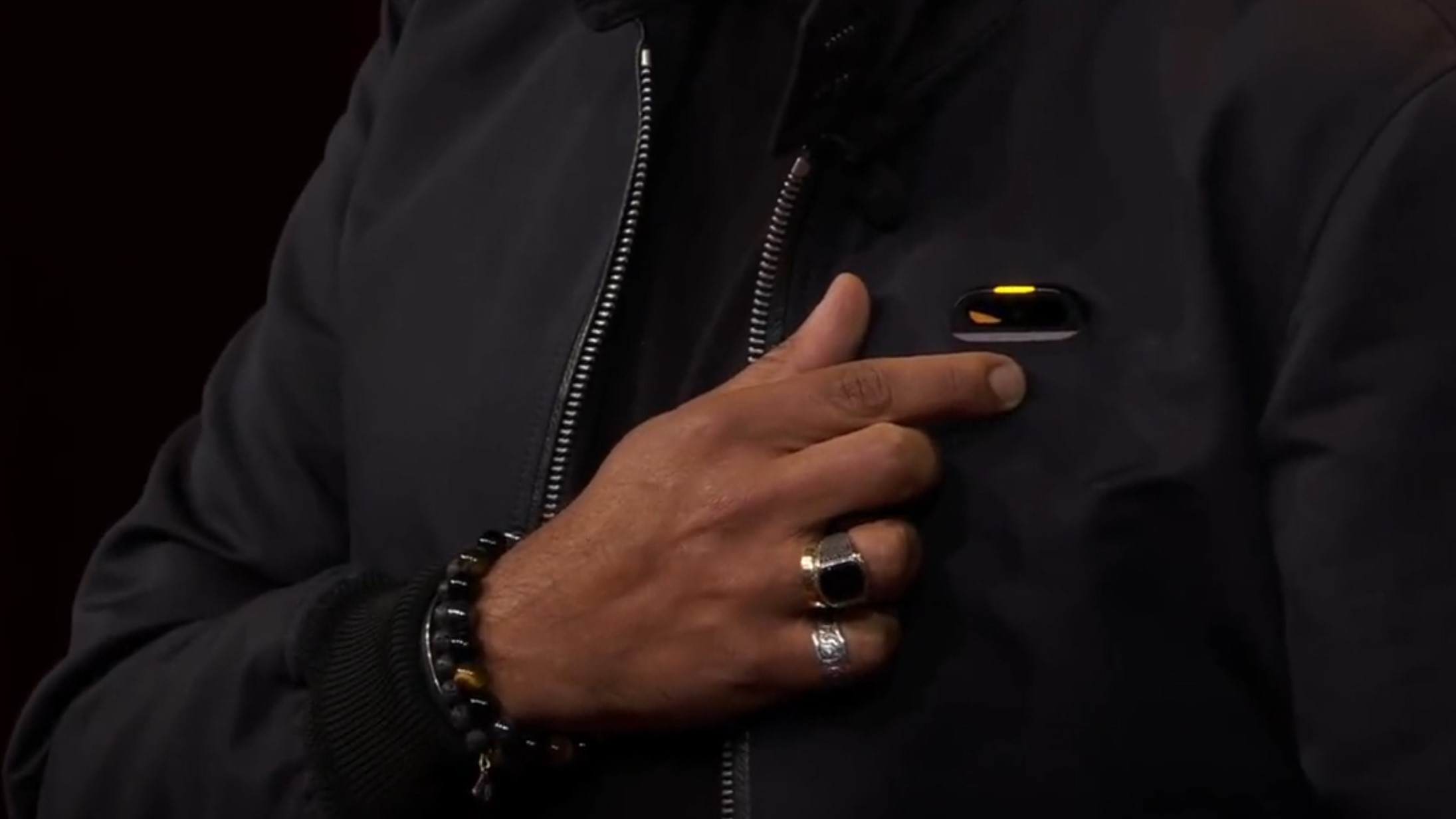
What could a screenless future look like? Humane, the company founded by ex-Apple executives five years ago, may have given us a glimpse of its first product as clips from an upcoming TED talk demo have leaked ahead of schedule.
Extracts of the talk — delivered by Humane president and Apple’s former director of design on the human interface team, Imran Chaudhri — have been all over Twitter, and we’ve embedded them throughout this piece to enjoy.
Like the communicators from Star Trek, the wearable is shown attached to the chest to be interacted with via taps and voice.
“It’s a new kind of wearable device and platform that’s built entirely from the ground up for artificial intelligence,” explains Chaudhri in comments transcribed by Inverse, which has seen the full recording. “And it's completely standalone. You don't need a smartphone or any other device to pair with it.”
What does that mean in practice? Firstly, it seems to function as a kind of wearable Alexa or Google Assistant, able to access “email, calendar invites and messages” to intelligently pull out context and answer questions, as in the clip below.
"Catch me up," a summary of crucial information you may have missed while you were busy, on @humane's device. pic.twitter.com/AAIfh2ChfmApril 21, 2023
Like Google Assistant, it’s also shown providing on-the-fly translations — but with an important difference. Chaudhri holds down a button on the device and speaks a reasonably complicated phrase: “Invisible devices should feel so natural to use that you almost forget about their existence.”
After a three-second pause, the device repeats the phrase in French. It’s somewhat tinny, but it’s unmistakably using Chaudhri’s own voice, rather than a generic virtual assistant’s robotic tones.
The @Humane wearable doing English->French AI translation in your own voice... wow. (SOUND ON)Video credit @ZarifAli9 Read the exclusive on the Humane wearable's features: https://t.co/TYRmtYPSYI pic.twitter.com/cmAWEU8DFSApril 21, 2023
The device also appears to have a built-in camera. At one point in the talk, captured on Twitter, Chaudhri produces a Milky Bar from his pocket, puts it in front of the device and says “Can I eat this?” After another three-second pause, the AI responds “A Milky Bar contains cocoa butter. Given your intolerance, you may want to avoid it.”
@humane's device helping you decide what you can and cannot eat based on knowing your preferences and dietary restrictions. pic.twitter.com/PFwEAsNxDIApril 21, 2023
“I’m gonna eat it anyway,” Chaudhri tells the device. “Enjoy it,” it replies.
The device’s final leaked party trick is how it handles times when you actually need to see something — in this case, an inbound call from Chaudhri’s wife: Humane CEO Bethany Bongiorno (a former software engineering director at Apple). The call information is projected onto Chaudhri’s hand.
First demo of the @Humane upcoming AI-powered wearable device. A phone call.Thanks @ZarifAli9 for sharing! pic.twitter.com/7qyDScPkOhApril 21, 2023
Is wearable AI the future?
Humane certainly has high hopes for the potential of this technology. It’s something that could theoretically give you all the assistance of your smartphone, while not proving as maddeningly distracting.
As Chaudhri puts it: “We like to say that the experience is screenless, seamless, and sensing, allowing you to access the power of compute while remaining present in your surroundings, fixing a balance that’s felt out of place for some time now.”
But before we get too excited, it’s worth stopping to reflect on a couple of things. Firstly, this is a controlled stage demo, so how much of what we’re seeing here is actually done in real-time rather than pre-programmed is questionable.
In particular, the translation bit seems a little too good to be true: How does the device know it’s translating with a single hold of the button? And even if it does, how does it know to translate into French rather than Spanish or Japanese?
Even if this is all achievable and released in the next few years, there are questions about whether it’s actually more practical than the smartphones we carry around today, too. Talking to your chest in public is a lot less private than furtively tapping away at your screen, for one thing.
And that’s discounting the fashion factor. Unless such tech is adopted en-masse, then there’s always going to be nerdiness associated with it — no matter how useful it may or may not be in practice.
There are reasons to be skeptical, then. But despite all this, we can’t wait to see the full TED Talk when it’s released.
It’s not clear when that will be. The journalist Zarif Ali said April 22, but at the time of writing, it’s still not on the TED site or YouTube channel. Watch this space.







